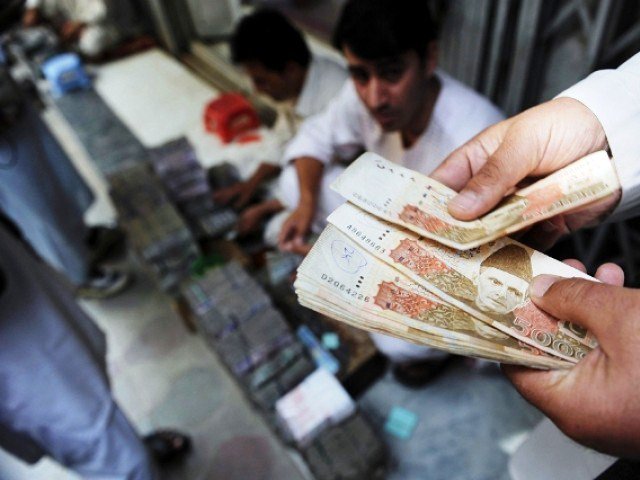
The annual review presents an analytical assessment of the financial sector during CY16, its associated risks and resilience analysis of the banking sector.
The FSR concluded that the performance of both the financial and non-financial sectors has improved the risk profile of the system as a whole, as risks to the financial system remained subdued.
However, some emerging low to moderate level risks in the short- to medium-term need attention and are being closely monitored by the SBP.
Global lender warns of risks to Pakistan’s economic stability
The review highlights some global concerns such as low world economic growth, especially slow growth in advanced economies and oil-price induced economic shocks in the Gulf Cooperation Council (GCC) countries (the major export destinations and source of remittances for Pakistan). Moreover, international trade slowdown; rising protectionist sentiments and policy normalisation in the US that might lead to tighter financial conditions in the Emerging Markets and Developing Economies (EMDEs). Going forward, it recommends that these developments warrant policymakers’ attention.
The review posits the outlook of the financial sector, in CY17, to remain largely positive amid the highlighted risks. It also notes that the SBP is cognisant of the emerging risks and has been taking measures to strengthen its regulatory and monitoring frameworks (including macroprudential/financial stability), improve the efficiency and security of the payments systems, enhance financial consumer protection and reinforce corporate governance regime.
It suggests that the domestic macrofinancial environment has been conducive in CY16: Output (both GDP and LSM) has been increasing; inflation remains subdued; exchange rate is stable amid adequate reserves; government borrowing from banking sector has receded, law and order conditions have improved and economic prospects are encouraging, more so, in view of China Pakistan Economic Corridor (CPEC).
Not surprisingly, performance of the banking sector has been satisfactory and financial markets, in general, have performed smoothly. In addition, the corporate sector has also benefited from the favorable macrofinancial conditions and has posted robust profits.
Banking sector - which accounts for around three-fourth of the financial sector - has performed well. Encouragingly, the growth momentum of advances has picked up further, with private sector as the main beneficiary, while asset quality has improved with a decline in infection ratios. Specifically, gross advances have increased by 12.81% in CY16 compared with 8.12% last year while non-performing loans to total loans ratio has come down to a decade low level of 10.01% at the end of CY16.
Banks’ profitability has, however, moderated, after seeing exceptionally high growth in the last few years. The return on assets and equity (ROA and ROE) is at 2.1% and 23.8% level in CY16, respectively, compared to 2.5 % and 25.8 % in CY15.
The liquidity position remains comfortable while the capital adequacy ratio (CAR) at 16.2 % remains high, albeit with some downward adjustment, primarily due to advances growth. The review also notes the increase in CAR requirements due to higher Capital Conservation Buffer (CCB) over 2017-2019 and recommends that the banks devise their capital enhancement plans accordingly.
In line with international best practices, the review also assesses the resilience of the banking sector to adverse scenarios by means of macro-stress testing. The results exhibit that the banking system is, generally, able to withstand adverse shocks.
Financial markets, in general, have performed smoothly without any considerable disruption during CY16. Volatility in the money, foreign exchange (FX) and equity markets has remained relatively muted. The review, however, draws attention to some developments.
For instance, the fiscal consideration has continued to drive the liquidity need in the money market; though, prudent management by the SBP has kept the market running smoothly. The activity in Pakistan Stock Exchange (PSX) with high growth in KSE-100 index has outperformed various global benchmarks, yet rising Price-Earning (P/E) ratio in short span of time indicates some role of sentiments behind the market movements.
The non-bank financial sector, though small in size, has managed to grow alongside the growing banking sector. Non-bank financial institutions’ (NBFIs) evolving regulatory framework and non-existence of complex and high value structures (private equity funds and hedge funds) have contained the risks within this sector.
ADB approves $300m for power sector reforms
Moreover, the demonstrated (financial crisis episode) toxic elements i.e. excessive leverage and illiquid investments are contained within the mutual fund industry (the major participant of NBFIs) through prudential limits. It points out that a major share of the NBFIs sector is concentrated in few large institutions, while some small institutions are facing solvency issues. The NBFIs, generally, have limited avenues for contingency liquidity support in times of stress, it notes.
Published in The Express Tribune, July 8th, 2017.
Like Business on Facebook, follow @TribuneBiz on Twitter to stay informed and join in the conversation.



































1713853507-0/MalalaHilary-(2)1713853507-0-270x192.webp)








COMMENTS
Comments are moderated and generally will be posted if they are on-topic and not abusive.
For more information, please see our Comments FAQ